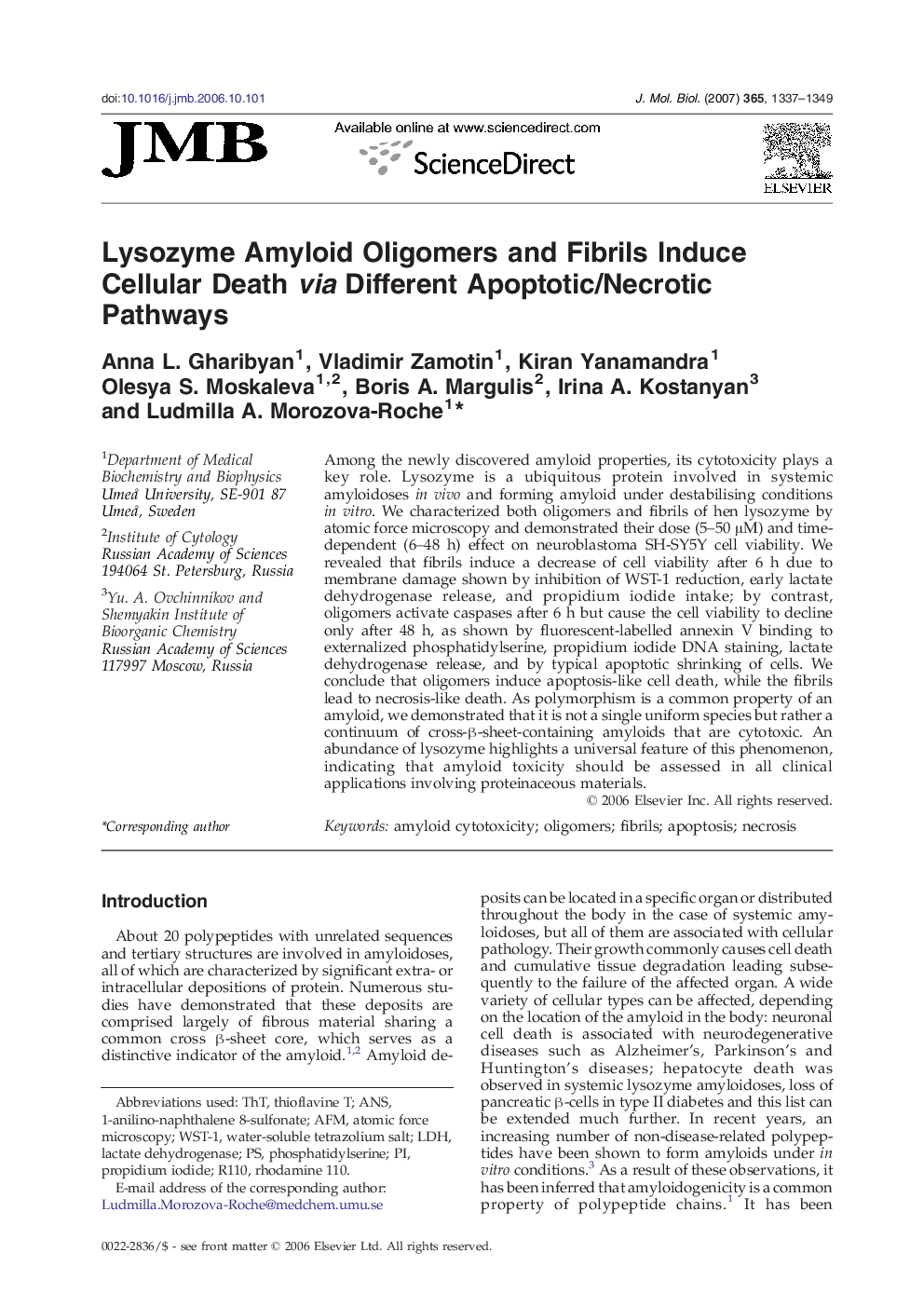| Article ID | Journal | Published Year | Pages | File Type |
|---|---|---|---|---|
| 2188783 | Journal of Molecular Biology | 2007 | 13 Pages |
Among the newly discovered amyloid properties, its cytotoxicity plays a key role. Lysozyme is a ubiquitous protein involved in systemic amyloidoses in vivo and forming amyloid under destabilising conditions in vitro. We characterized both oligomers and fibrils of hen lysozyme by atomic force microscopy and demonstrated their dose (5–50 μM) and time-dependent (6–48 h) effect on neuroblastoma SH-SY5Y cell viability. We revealed that fibrils induce a decrease of cell viability after 6 h due to membrane damage shown by inhibition of WST-1 reduction, early lactate dehydrogenase release, and propidium iodide intake; by contrast, oligomers activate caspases after 6 h but cause the cell viability to decline only after 48 h, as shown by fluorescent-labelled annexin V binding to externalized phosphatidylserine, propidium iodide DNA staining, lactate dehydrogenase release, and by typical apoptotic shrinking of cells. We conclude that oligomers induce apoptosis-like cell death, while the fibrils lead to necrosis-like death. As polymorphism is a common property of an amyloid, we demonstrated that it is not a single uniform species but rather a continuum of cross-β-sheet-containing amyloids that are cytotoxic. An abundance of lysozyme highlights a universal feature of this phenomenon, indicating that amyloid toxicity should be assessed in all clinical applications involving proteinaceous materials.
